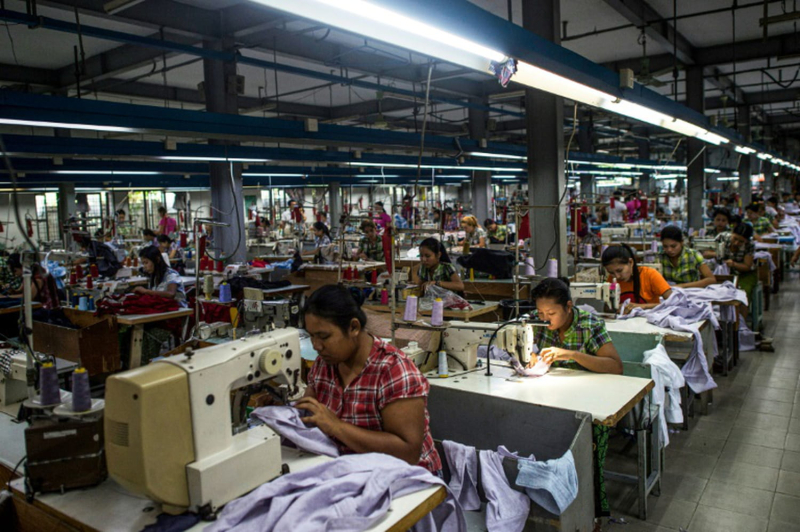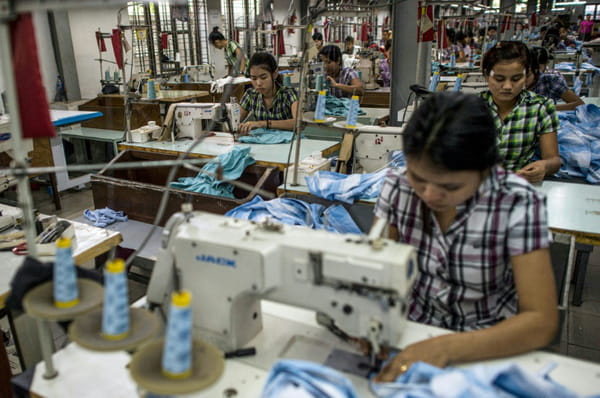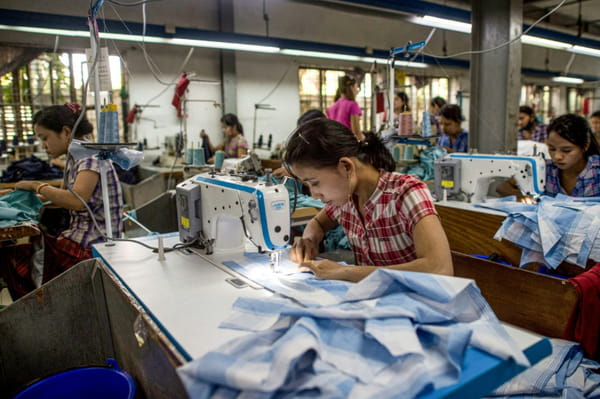In the suburbs of Rangoon, Wai Wai skips breakfast before going to work in a clothing factory tements, to save a few kyats that will help him survive in a Burma in the grip of civil war. For a 12-hour shift, she earns about 6,800 kyats per day (3 euros, at the official exchange rate), which should be enough to pay her rent, her food and his clothes. His meager salary must also help his parents who remained in the west of the country, where the conflict between the junta and rebel ethnic groups has devastated the economy and inflated the price of essential commodities. Wai Wai and her sister only eat meat once a week. “We cut back on expenses as much as possible. Even if we want to go out, we control ourselves so we don't go,” she told AFP, using a pseudonym for security reasons. Every day, hundreds of workers, mostly women, toil long hours in garment factories in Hlaing Tharyar, near Rangoon, the economic capital of Myanmar. Several years ago, the business was booming, with orders from Adidas, GAP, H&M and Zara, thanks to policies of openness to international trade that have transformed a country long considered self-sufficient. – Employment in decline – But the February 2021 coup cut short the movement and brought the economy to its knees, between galloping inflation, power cuts and capital flight. In a garment factory in Rangoon, Burma, on November 1, 2018 © AFP – Ye Aung THU In a nearby factory, Thin Thin Khine and her two sisters work 12-hour days making company uniforms, earning a monthly salary of around 350,000 kyat (150 euros), which barely covers her family's expenses. “All my sisters are working, but there is no money left at all,” she says. “We can no longer afford new clothes, beauty or personal care products,” she describes. As the crackdown intensified, foreign companies began leaving the country. Inditex, the owner of Zara, told AFP that it had stopped subcontracting in Burma. H&M is “gradually winding down its operations in the country,” a spokesperson told AFP, without giving an exit date. Others have chosen to stay, such as Adidas, which told AFP it works closely with its local suppliers. The Wai Wai factory operates on behalf of Chinese clients and Danish brand Bestseller. Estimates of the garment industry's export revenues vary: from $3 billion last year according to Myanmar's Ministry of Commerce, to $7.6 billion in 2022 according to the European Chamber of Commerce in Myanmar. Europe, which accounts for more than half of exports, is the main foreign customer for Burmese clothing. – Lives that are “collapsing” – But employment has not returned to its pre-pandemic and pre-coup level: factories employed 500,000 workers in January 2022, compared to 700,000 workers in 2019, the International Labor Organization noted. In a garment factory in Rangoon, Myanmar, on November 1, 2018 © AFP – Ye Aung THU Employers are facing difficulties in the supply of electricity and the rising cost of raw materials. In May, the junta admitted that the country was only able to produce a little more than half of its daily electricity needs. To keep the lights on and the machines running, businesses rely on expensive generators, which remain vulnerable to diesel shortages in Yangon. “The current situation is that now we are investing more money and getting less profit,” says Khin Khin Wai, who runs a small garment factory. “Our lives are not progressing year by year, they are collapsing,” she continues. Employers pay “the lowest wage possible… It would be better if we could pay more, but we are not in a position to do so,” she concludes. All rights reserved All rights reserved for reproduction and representation. © (2024) Agence France-Presse



